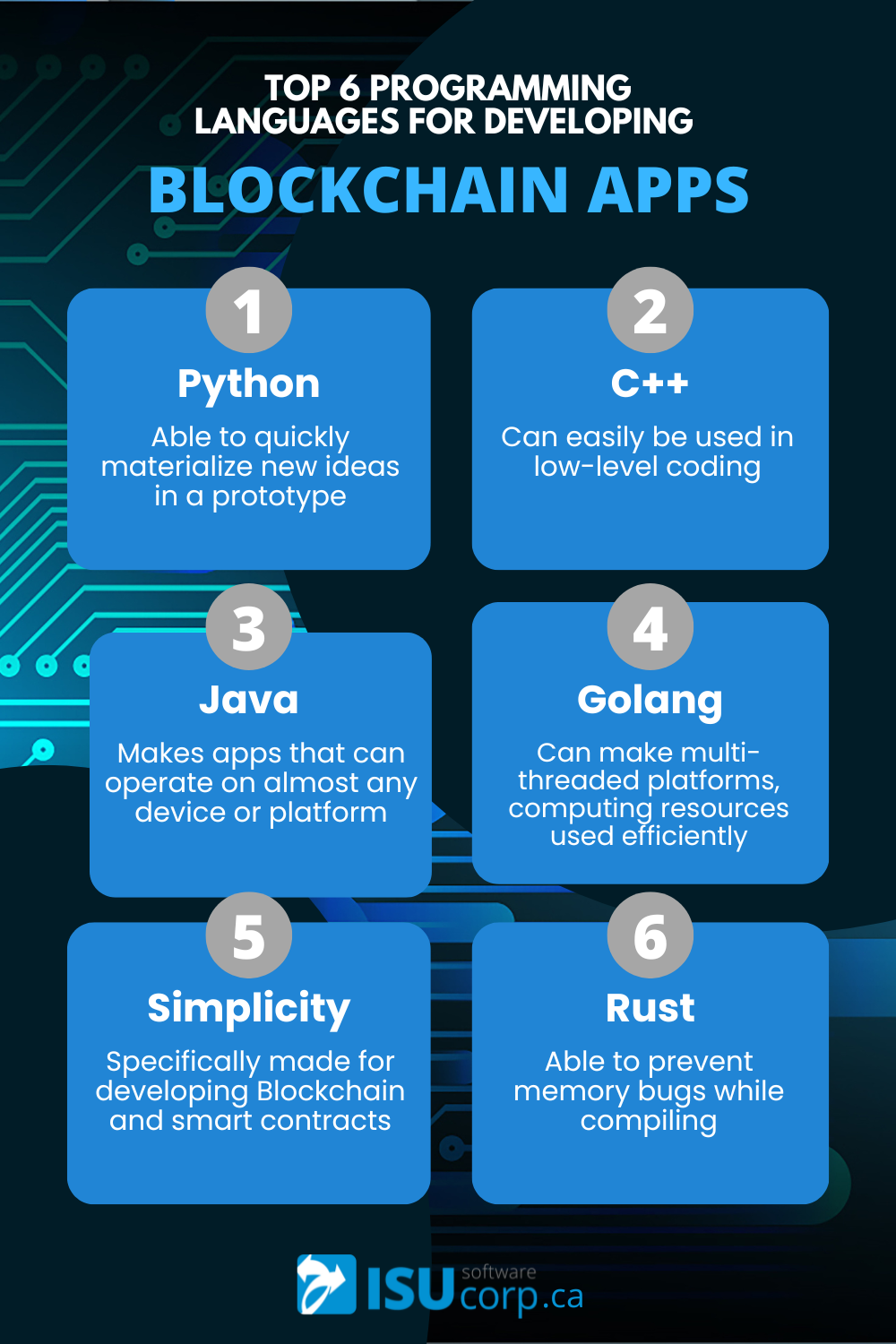Blockchain technology has taken industries by storm. Among many features, its ability to streamline and automate processes while enhancing the performance of operations has made this technology highly sought after. Anytime new technology makes a buzz like this, companies want to make it more accessible to their users.
If you consider technology nowadays, you’ll see that there’s no better way to increase accessibility to a product than by having a high-quality application.
Even though Blockchain technology has the upper hand in competitive markets, many companies underestimate some programming languages or are simply unsure which to use when integrating them into their applications. For this reason, we will go over the various languages commonly used when developing these applications.
Why do you need a programming language?
Software development requires the right tech stack. In the case of tech stacks for Blockchain solutions, companies will find a wide variety of options that all serve different purposes. This means we’ll need to identify which is right for your application.
Here are some of the top 6 solutions:
1. Python:
This is an obvious choice for its simplicity alone. Although Python is still considered new in the Blockchain space, it’s commonly used for networks like Steem, NEO, Ethereum, and QTUM among others.
Many developers choose Python for its ability to quickly materialize new ideas in a prototype. Additionally, its resources include frameworks, plugins, and libraries as well as external ones. Note that everything here is open-source, meaning that if an issue should arise while developing the Blockchain application, it can be quickly and easily resolved.
2. C++:
In the world of programming, this is a go-to for general-purpose programming simply because of how diverse it can be for building software, especially solutions for Blockchain. Bitcoin, Ripple, Litecoin, and many more are all written using C++.
Among the many draws to C++, one of the biggest reasons for its popularity is that the solution is object-oriented (OOP) and makes low-level functions accessible. This means that the development process is much faster and simpler. Additionally, it's highly compatible, allowing it to easily be used in low-level coding. Programmers know that this is a huge advantage when it comes to scalability and the speed of a product.
3. Java:
This is one of the biggest competitors for C++ due to its popularity and how comprehensive it is during software development. Blockchain solutions such as IOTA, NEO, and Ethereum were created using Java.
What makes Blockchain developers happy with this language are three things in particular: portability, OOP, and API. These contributors are what make applications that are well-structured, high performing, and that can easily operate on almost any device or platform. Another big draw to Java is its highly secured interface. Security threats are mitigated through the systems that manage security such as byte-code verifier checks and Java Virtual Machine.
4. Golang:
Commonly referred to as GO, this language is great for building Blockchain solutions quickly and painlessly. Software developers building apps with GO can make multi-threaded platforms where computing resources can be used efficiently which is paramount for operating Blockchain solutions.
Another reason developers would use Golang is that it's a statically-typed and compiled language. When it comes to Golang apps, this is going to protect them from errors with the runtime as well as make sure that the development process is efficient.
Among the other draws to Golang, one of its biggest advantages for programmers is that it compiles itself in machine code instead of using virtual machines. Performance-wise, Golang will operate similarly to C++. It will use various other programming practices from different languages which is why the code is easier to write.
5. Simplicity:
A programming language specifically for developing Blockchain, Simplicity was originally made to replace Bitcoin’s script and Ethereum's EVM and is also used to create smart contracts.
When it comes to the creation of Smart Contracts for Bitcoin and Ethereum, Simplicity is meant to mitigate complexity and create solutions full of features that can be relied on. Additionally, its compatibility with Blockstream’s Element platform allows it to support various open-source software.
6. Rust:
Recently, this has been one of the top choices for blockchain developers, primarily for its low friction and secure features. On top of this, it’s a relatively easy language to learn.
Developers who are sufficient with Rust are in high demand specifically for the crypto industry. Among the many draws to the language, when it comes to blockchain applications, the ability to prevent memory bugs while compiling is critical.
What’s next?
While many industries are finding ways to implement blockchain technology, those already using it are finding ways to enhance it. Whichever stage you and your business are at, make sure you’re using experienced developers who won’t waste your investment. Technology is moving forward and it’s not waiting for hesitating businesses confined to outdated methods.
Written By Ben Brown
—
ISU Corp is an award-winning software development company, with over 17 years of experience in multiple industries, providing cost-effective custom software development, technology management, and IT outsourcing.
Our unique owners’ mindset reduces development costs and fast-tracks timelines. We help craft the specifications of your project based on your company's needs, to produce the best ROI. Find out why startups, all the way to fortune 500 companies like General Electric, Heinz, and many others have trusted us with their projects. Contact us here.

















